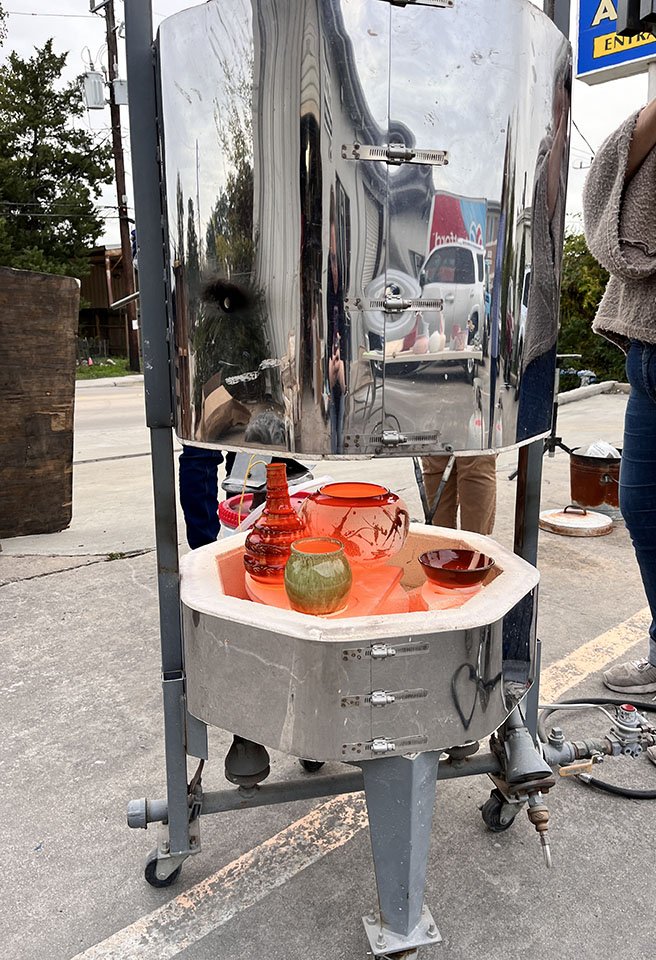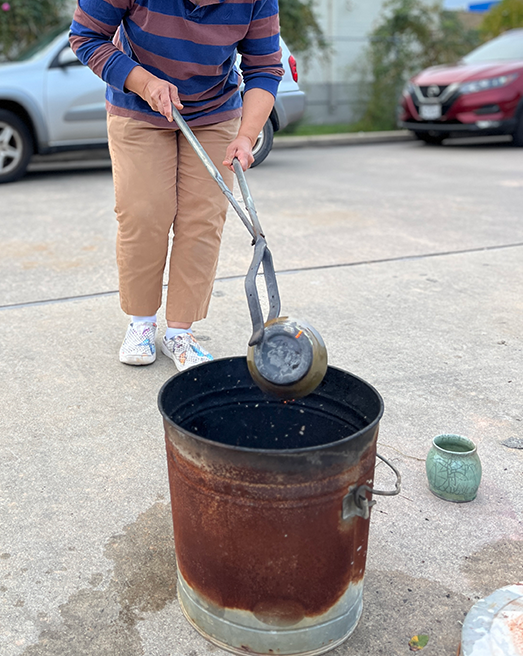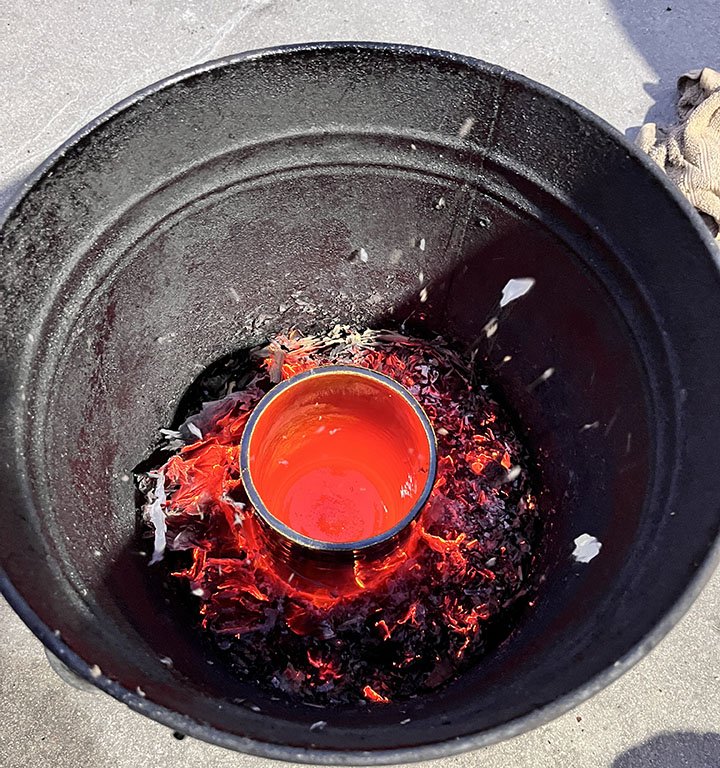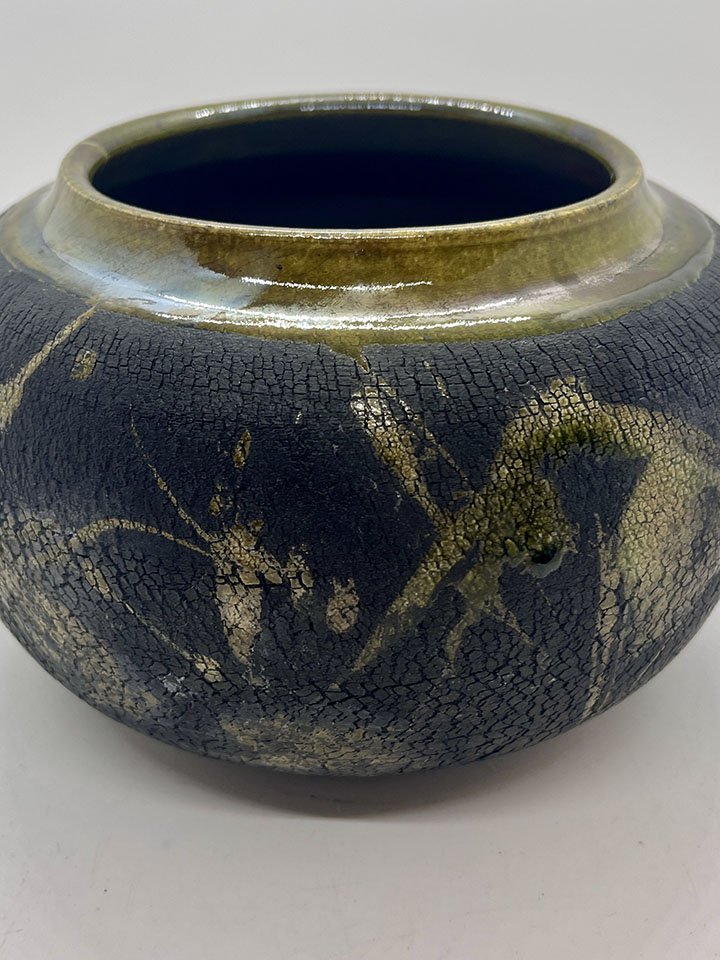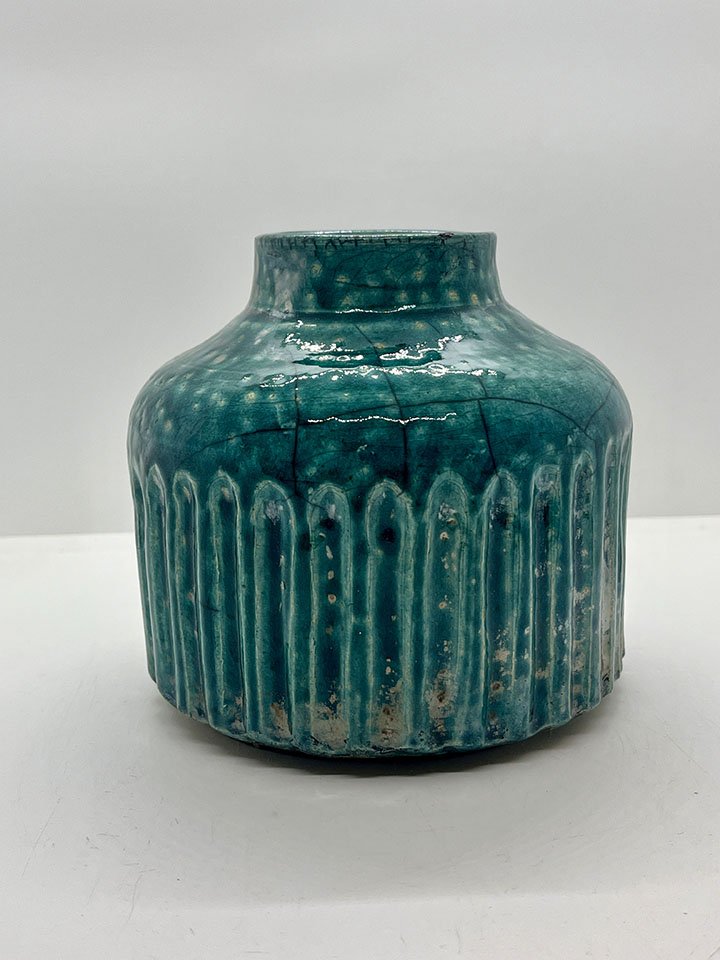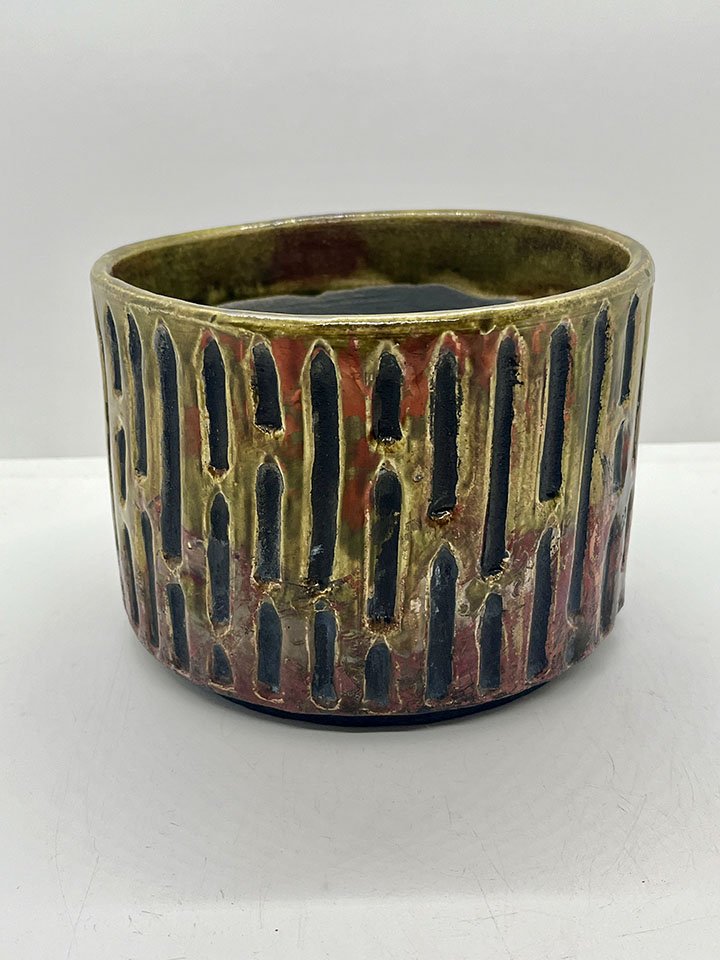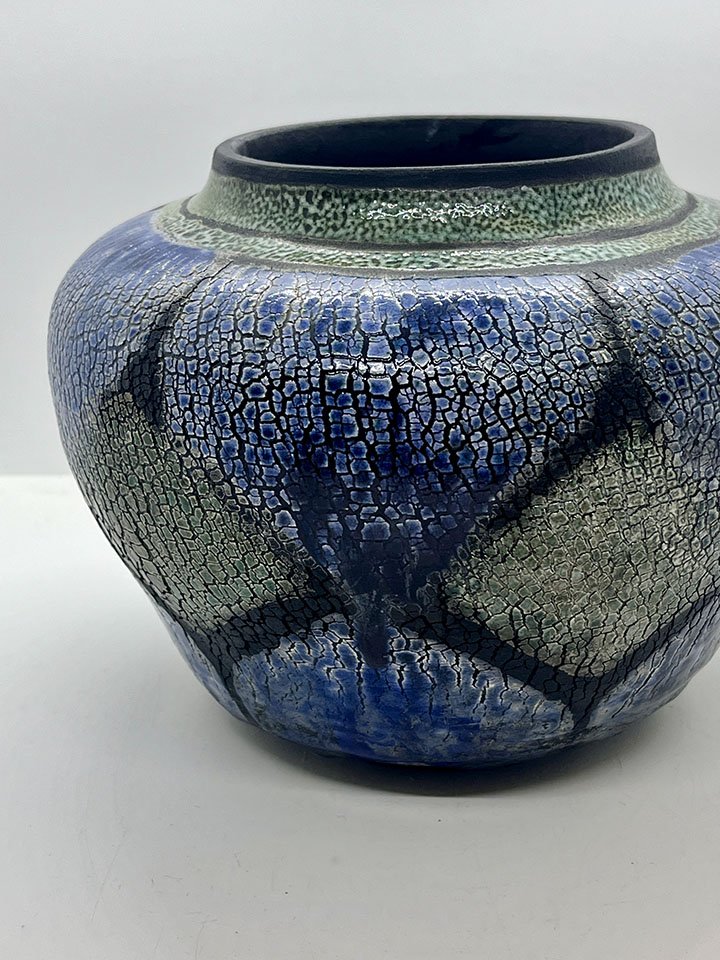Raku Firing: Embracing Controlled Chaos
Raku is all about embracing the chaos and letting the flames work their magic. Here’s some fun and a little bit of facts from a Raku Day at Potters’ Place Pottery in 2023.
Starting in the morning, artists roll out the raku kiln into the middle of the parking lot, attach it to several propane gas tanks, and start the heating up process. It can take up to 50 minutes for the first round to heat to 1800 degrees F, and the fun begins. Pre-glazed or bare bisqued pottery pieces are placed in the kiln to heat up. Over the next few hours, hot pieces are removed to trash cans filled with newspaper and other combustibles, and new pieces are put in the kiln to heat up.
Here's where the magic happens: as the flames and smoke dance around the pottery piece, unique surface effects are created, ranging from crackled glazes to metallic lusters. The atmosphere within the reduction chamber plays a crucial role in shaping the final appearance of each piece, creating all sorts of crazy effects. Crackles, metallic shines, you name it.
Pieces are allowed to cool for 15 minutes in the trashcan and are then removed to a safe side part of the parking lot to fully cool. More newspaper is placed in the trashcan to be ready for the next artwork. We visit and potluck throughout the entire day until all pieces are done, and then, it’s clean up time all ready full of “ooohs” and “ahhhhs” watching the final results.
History:
Raku traces its origins back to 16th-century Japan, where it was developed as a method for creating tea ceremony bowls. The process was favored by tea masters for its rustic aesthetic and intimate connection to nature. The term "Raku" itself translates to "happiness" or "enjoyment," reflecting the joy found in both the creation and the appreciation of Raku pottery.
Raku firing offers artists a sense of spontaneity and experimentation. Unlike traditional firing methods, which rely on precise control and predictability, Raku embraces the element of chance, inviting artists to surrender to the whims of the fire. This element of risk fosters creativity and encourages artists to embrace imperfection as an essential aspect of the creative process.
